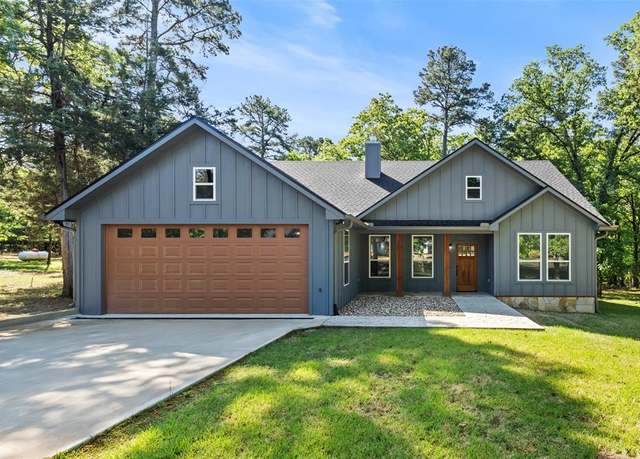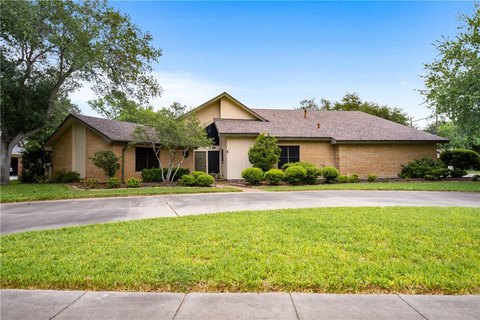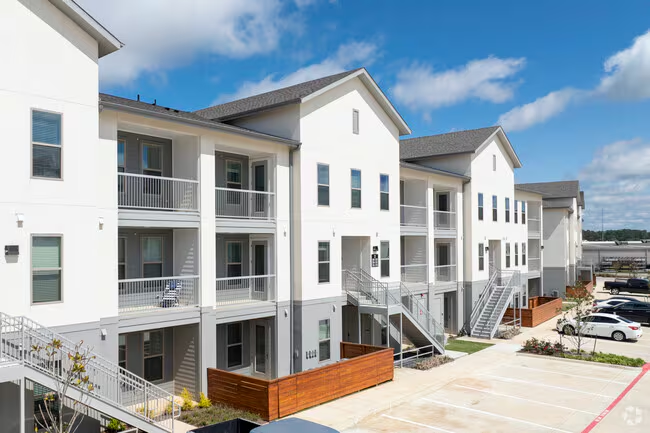When Sarah and James found their dream home in the quiet suburbs of Portland, they were elated—until they sat down to crunch the numbers. With mounting student loan debt and a modest income, securing a traditional mortgage felt out of reach. They did not want to keep renting, but saving for a down payment could take years. One evening, over dinner with friends, someone mentioned a rent-to-own program. It sounded like the perfect solution: the chance to live in their dream home now while working toward ownership. However, as Sarah dug deeper into the details, she wondered: Is this the financial lifeline they hoped for, or just another obstacle in their journey to homeownership?
Like Sarah and James, many aspiring homeowners are drawn to Rent to own programs: A Pathway to Homeownership or a Risky Gamble? especially when traditional homebuying avenues feel blocked. These programs offer a unique opportunity for those struggling with credit or savings, but more is beneath the surface. In this article, we will explore rent-to-own agreements, how they work, their benefits, and potential pitfalls—while also looking at key statistics to help you decide if they are worth the gamble.
What is Rent-to-Own?
Rent-to-own (RTO) is a type of housing agreement that allows tenants to rent a home with the option (and sometimes the obligation) to buy the property after a certain period. During this time, a portion of the rent is often set aside and credited toward a future down payment or the home’s purchase price. These agreements especially appeal to individuals needing better credit or who cannot save enough for a traditional down payment but still aspire to become homeowners.
There are typically two types of Rent to own programs: A Pathway to Homeownership or a Risky Gamble? agreements: lease-option and lease-purchase.
- Lease-option agreements give the tenant the option, but not the obligation, to purchase the home at the end of the lease term.
- Lease-purchase agreements require the tenant to buy the home at the end of the lease.
Understanding the distinction is crucial since lease-purchase agreements legally bind the renter to buy the home regardless of whether their financial situation improves or deteriorates.
The Rise of Rent-to-Own Programs: Why Now?
As housing prices have skyrocketed in many urban and suburban areas across the U.S., more potential buyers are considering alternative paths to homeownership. Between 2020 and 2022, home prices in the U.S. surged by over 40%, fueled by limited housing supply and low interest rates, making it increasingly difficult for first-time buyers to break into the market. At the same time, 31% of Americans, particularly those under 40, cited saving for a down payment as the biggest barrier to homeownership (National Association of Realtors, 2022).
Enter rent-to-own programs, which provide an opportunity for people who cannot qualify for a mortgage or save for a down payment in the short term. As of 2023, approximately 5-7% of all home purchase agreements in the U.S. were categorized as rent-to-own or similar structures (Statista, 2023). These programs have especially flourished in markets with high rental demand and limited housing supply.
How Rent-to-Own Programs Work
A typical rent-to-own agreement involves several key steps:
- The Agreement:
- The tenant signs a lease agreement with a specified term, often ranging from one to three years. The agreement outlines how much the monthly rent will be applied toward the home’s eventual down payment or purchase price.
- Purchase Price Lock-in:
- The home’s purchase price is usually locked in when the rent-to-own agreement is signed. This can be advantageous in a rising housing market but risky if home values decline.
- Monthly Payments:
- Rent is typically higher in a rent-to-own agreement than in a traditional rental because part of the rent goes toward the future down payment. For example, if the tenant pays $1,500 monthly rent, $300 might go toward the down payment, while $1,200 is for the actual rent.
- The Option Fee:
- The tenant often pays an upfront fee, known as an option fee, which typically ranges from 1% to 5% of the home’s purchase price. This fee gives the tenant the right to purchase the home at the end of the lease. The option fee is usually non-refundable if the tenant chooses not to buy.
- Final Decision:
- At the end of the lease term, the tenant has the option (or obligation, depending on the agreement) to purchase the home. If they decide to buy, the rent credits and the option fee are applied to the down payment.
The Benefits of Rent-to-Own Programs
- Time to Build Credit:
- For individuals with poor or no credit, rent-to-own agreements provide time to improve their credit score and eventually qualify for a mortgage. According to FICO, nearly 16% of Americans have a credit score below 580, which is considered poor and challenging traditional mortgage approval (Experian, 2023).
- Locked-in Purchase Price:
- A locked-in purchase price can be a significant advantage in a rising housing market. If home prices increase during the lease period, the tenant may be able to buy the home at a price below the current market rate.
- Test-Drive the Home:
- Rent-to-own agreements allow tenants to “test-drive” the home and neighborhood before fully committing to purchase. This is particularly beneficial if the renter still determines long-term living in the area.
The Risks of Rent-to-Own Programs
- Loss of Investment:
- If the tenant cannot buy the home at the end of the lease due to insufficient financing or a change in circumstances, they lose any rent credits or option fees that were paid. According to a 2018 report from the Urban Institute, only 20% of rent-to-own agreements result in an actual home purchase.
- Higher Costs:
- Rent-to-own agreements often come with higher monthly rent payments compared to traditional rentals. This can strain renters already on tight budgets, especially since they are also responsible for any maintenance or repairs often stipulated in the agreement.
- Market Risk:
- If the housing market declines, the tenant may be stuck with an option to purchase a home worth less than the agreed-upon price. This puts renters at risk of overpaying, which can be financially devastating.
- Contract Complications:
- Rent-to-own contracts can be complex, and there is a significant risk of misunderstanding the terms. If the tenant does not fully grasp the legal implications of the agreement, they could inadvertently waive critical rights or assume unexpected responsibilities.
Who Should Consider Rent-to-Own?
Rent-to-own programs may be suitable for individuals in specific financial situations:
- Those with poor credit scores need time to improve their financial standing.
- Renters committed to purchasing a home but need flexibility in saving for a down payment.
- People in markets where housing prices are rapidly increasing want to lock in a price.
However, it is essential to approach rent-to-own agreements with caution. Anyone considering this path should consult a real estate attorney to review the contract and ensure they understand the terms. Additionally, improving credit and saving during the rental period is important to increase the likelihood of mortgage approval when the time comes.
Conclusion
Rent-to-own programs can be a double-edged sword: they offer a potential path to homeownership for those struggling to qualify for a traditional mortgage, but they also come with considerable risks. Sarah and James, like many others, eventually realized that while rent-to-own seemed like a perfect solution at first glance, it required careful consideration of their financial situation and long-term goals. For some, it may open the door to homeownership, while others may close it more firmly than before. As with any major financial decision, the key is to proceed cautiously, armed with knowledge and a clear understanding of the risks and rewards.












 Afrikaans
Afrikaans Shqip
Shqip አማርኛ
አማርኛ العربية
العربية Հայերեն
Հայերեն Azərbaycan dili
Azərbaycan dili Euskara
Euskara Беларуская мова
Беларуская мова বাংলা
বাংলা Bosanski
Bosanski Български
Български Català
Català Cebuano
Cebuano Chichewa
Chichewa 简体中文
简体中文 繁體中文
繁體中文 Corsu
Corsu Hrvatski
Hrvatski Čeština
Čeština Dansk
Dansk Nederlands
Nederlands English
English Esperanto
Esperanto Eesti
Eesti Filipino
Filipino Suomi
Suomi Français
Français Frysk
Frysk Galego
Galego ქართული
ქართული Deutsch
Deutsch Ελληνικά
Ελληνικά ગુજરાતી
ગુજરાતી Kreyol ayisyen
Kreyol ayisyen Harshen Hausa
Harshen Hausa Ōlelo Hawaiʻi
Ōlelo Hawaiʻi עִבְרִית
עִבְרִית हिन्दी
हिन्दी Hmong
Hmong Magyar
Magyar Íslenska
Íslenska Igbo
Igbo Bahasa Indonesia
Bahasa Indonesia Gaeilge
Gaeilge Italiano
Italiano 日本語
日本語 Basa Jawa
Basa Jawa ಕನ್ನಡ
ಕನ್ನಡ Қазақ тілі
Қазақ тілі ភាសាខ្មែរ
ភាសាខ្មែរ 한국어
한국어 كوردی
كوردی Кыргызча
Кыргызча ພາສາລາວ
ພາສາລາວ Latin
Latin Latviešu valoda
Latviešu valoda Lietuvių kalba
Lietuvių kalba Lëtzebuergesch
Lëtzebuergesch Македонски јазик
Македонски јазик Malagasy
Malagasy Bahasa Melayu
Bahasa Melayu മലയാളം
മലയാളം Maltese
Maltese Te Reo Māori
Te Reo Māori मराठी
मराठी Монгол
Монгол ဗမာစာ
ဗမာစာ नेपाली
नेपाली Norsk bokmål
Norsk bokmål پښتو
پښتو فارسی
فارسی Polski
Polski Português
Português ਪੰਜਾਬੀ
ਪੰਜਾਬੀ Română
Română Русский
Русский Samoan
Samoan Gàidhlig
Gàidhlig Српски језик
Српски језик Sesotho
Sesotho Shona
Shona سنڌي
سنڌي සිංහල
සිංහල Slovenčina
Slovenčina Slovenščina
Slovenščina Afsoomaali
Afsoomaali Español
Español Basa Sunda
Basa Sunda Kiswahili
Kiswahili Svenska
Svenska Тоҷикӣ
Тоҷикӣ தமிழ்
தமிழ் తెలుగు
తెలుగు ไทย
ไทย Türkçe
Türkçe Українська
Українська اردو
اردو O‘zbekcha
O‘zbekcha Tiếng Việt
Tiếng Việt Cymraeg
Cymraeg isiXhosa
isiXhosa יידיש
יידיש Yorùbá
Yorùbá Zulu
Zulu